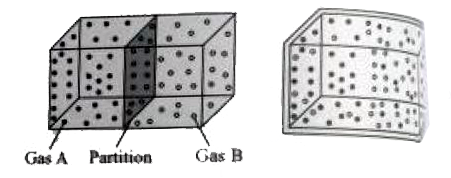Identify the process which is not a part of water cycle.
Evaporation
Condensation
Transpiration
Sublimation
The correct Answer is:D
To identify the process which is not a part of the water cycle, we can follow these steps:
Step 1: Understand the Water Cycle
The water cycle consists of several processes that describe how water moves through the environment. The main processes include:
- Evaporation: Water from oceans, rivers, and lakes turns into vapor and rises into the atmosphere.
- Transpiration: Water vapor is released from plants into the atmosphere.
- Condensation: Water vapor cools and forms clouds.
- Precipitation: Water falls back to Earth in the form of rain, snow, or other forms.
Step 2: Analyze the Given Options
The question provides four options:
1. Evaporation
2. Condensation
3. Transpiration
4. Sublimation
Step 3: Identify Each Process
- Evaporation: Part of the water cycle where water turns into vapor.
- Condensation: Part of the water cycle where vapor turns into liquid, forming clouds.
- Transpiration: Part of the water cycle where plants release water vapor.
- Sublimation: The process where solid water (ice) turns directly into vapor without becoming liquid. This process is not commonly associated with the water cycle.
Step 4: Determine the Correct Answer
From the analysis, we see that:
- Evaporation, condensation, and transpiration are all part of the water cycle.
- Sublimation, while it does involve water, is not a typical part of the water cycle as it does not fit into the main processes described.
Conclusion
The process that is not a part of the water cycle is sublimation.
---
The water cycle consists of several processes that describe how water moves through the environment. The main processes include:
- Evaporation: Water from oceans, rivers, and lakes turns into vapor and rises into the atmosphere.
- Transpiration: Water vapor is released from plants into the atmosphere.
- Condensation: Water vapor cools and forms clouds.
- Precipitation: Water falls back to Earth in the form of rain, snow, or other forms.
The question provides four options:
1. Evaporation
2. Condensation
3. Transpiration
4. Sublimation
- Evaporation: Part of the water cycle where water turns into vapor.
- Condensation: Part of the water cycle where vapor turns into liquid, forming clouds.
- Transpiration: Part of the water cycle where plants release water vapor.
- Sublimation: The process where solid water (ice) turns directly into vapor without becoming liquid. This process is not commonly associated with the water cycle.
From the analysis, we see that:
- Evaporation, condensation, and transpiration are all part of the water cycle.
- Sublimation, while it does involve water, is not a typical part of the water cycle as it does not fit into the main processes described.
The process that is not a part of the water cycle is sublimation.
Topper's Solved these Questions
- BOOK - PEARSON IIT JEE FOUNDATIONCHAPTER - WATER - A WONDER LIQUIDEXERCISE - Short answer type26videos
WATER - A WONDER LIQUID
- BOOK - PEARSON IIT JEE FOUNDATIONCHAPTER - WATER - A WONDER LIQUIDEXERCISE - Concept application5videos
WATER - A WONDER LIQUID
- BOOK - PEARSON IIT JEE FOUNDATIONCHAPTER - WATER - A WONDER LIQUIDEXERCISE - Crossword1videos
WATER - A WONDER LIQUID
- BOOK - PEARSON IIT JEE FOUNDATIONCHAPTER - MYSTERY OF MATTER EXERCISE - CROSSWORD1videos
MYSTERY OF MATTER
- BOOK - PEARSON IIT JEE FOUNDATIONCHAPTER - WATER-A WONDER LIQUID EXERCISE - Crossword1videos
WATER-A WONDER LIQUID
Similar Questions
Knowledge Check
- Question 1 - Select One
Identify the item which item which is not a part of Shareholder's Funds
AShare Application Money Pending AllotmentBShare CapitalCReserves and SurplusDMoney Received against Share Warrants - Question 2 - Select One
Identify the process by which roots pull water from the soil.
ARespirationBTranspirationCPhotosynthesisDTransportation - Question 3 - Select One
Identify the process by which roots pull water from the soil.
ARespirationBTranspirationCPhotosynthesisDTransportation
Identify the process which is not involved in respiration.
View SolutionIdentify the gas which is insoluble in water.
View SolutionIdentify the process which occur in the above diagram?
 View Solution
View SolutionIdentify the process which occur in the above diagram?
 View Solution
View SolutionIdentify the gas which is insoluble in water.
View Solution

